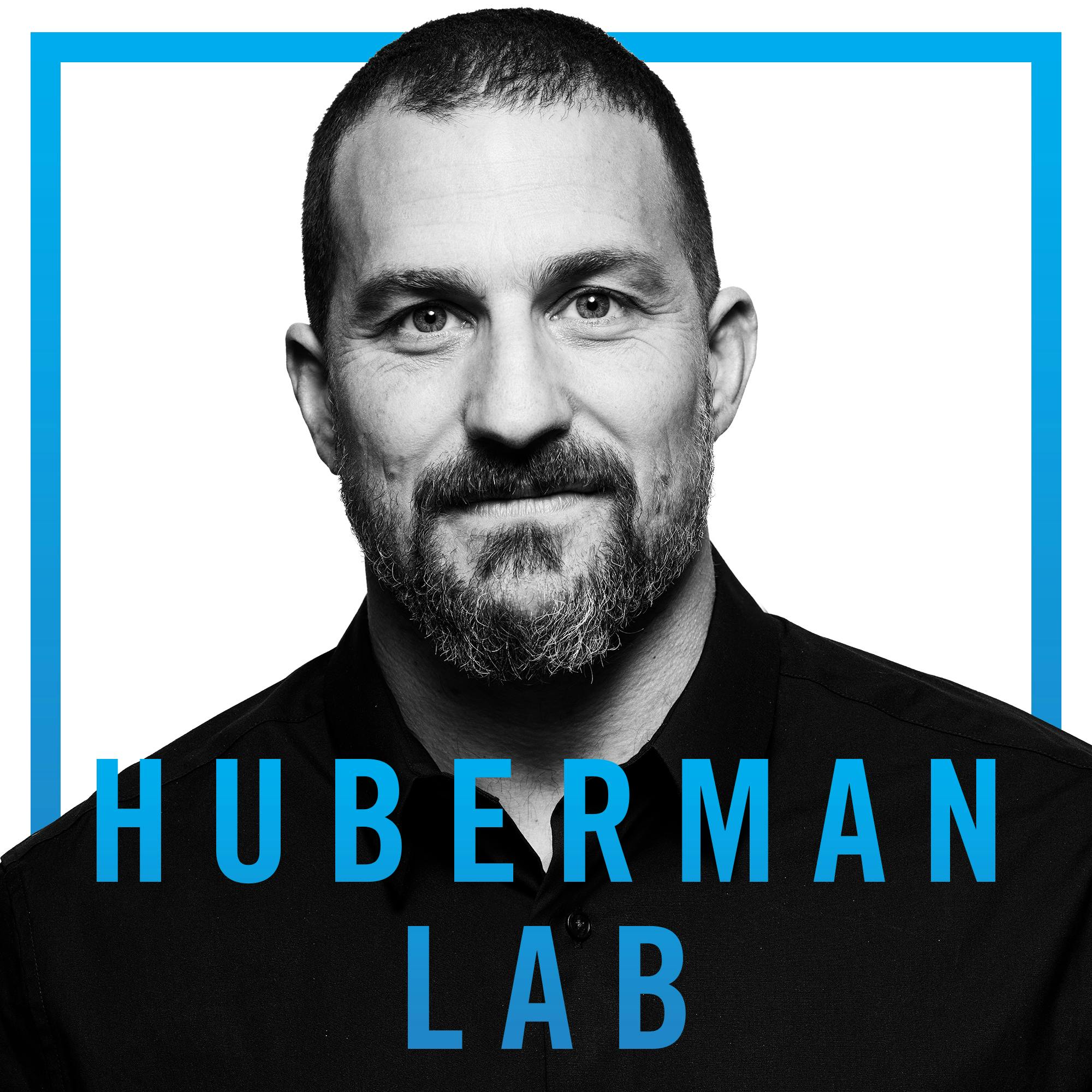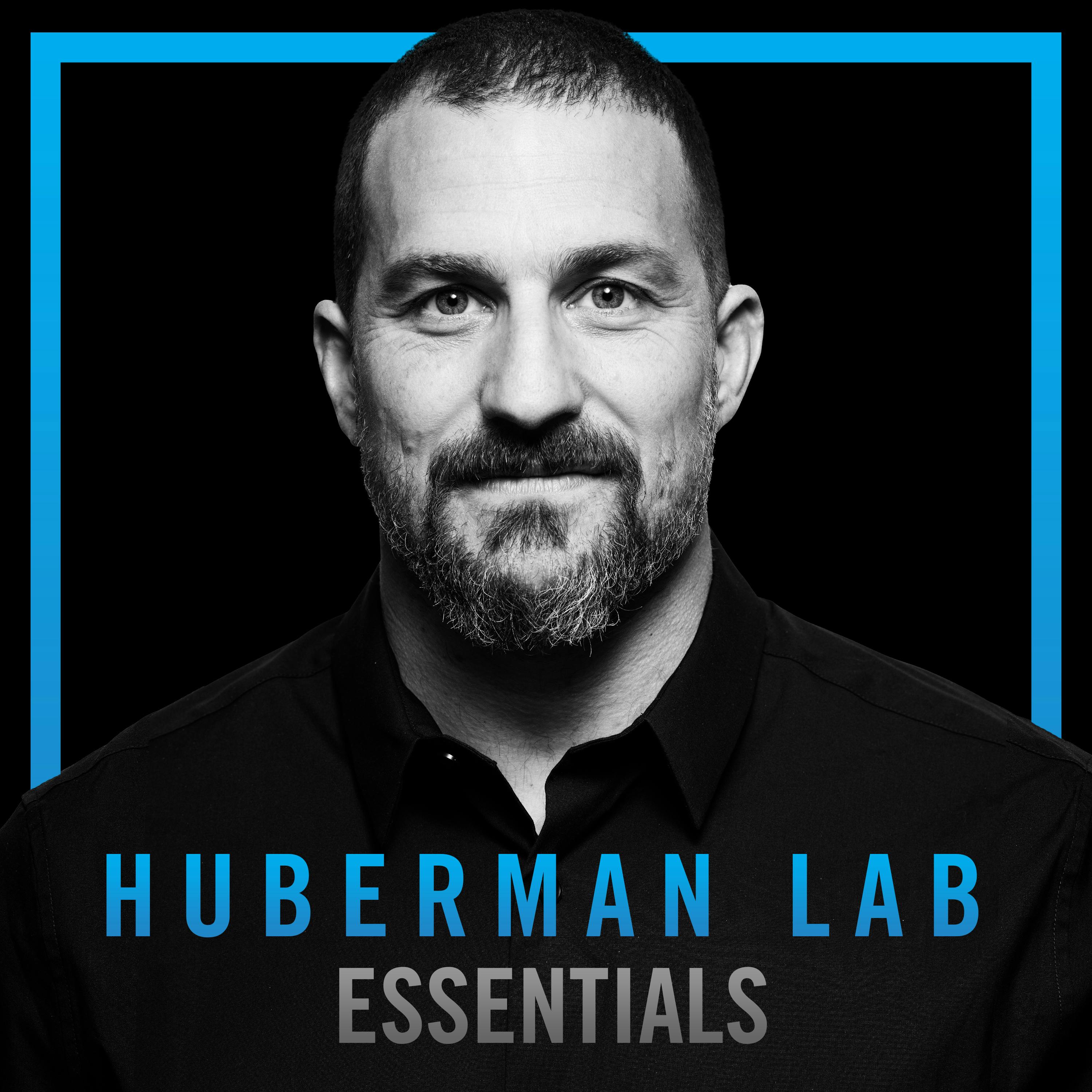
January 25, 2021 • 1hr 49min
How to Defeat Jetlag, Shift Work & Sleeplessness
Huberman Lab

Key Takeaways
- Your "temperature minimum" occurs about 2 hours before your average wake time and is a key reference point for shifting your circadian rhythm
- Viewing bright light in the 4-6 hours after your temperature minimum will advance your clock (wake/sleep earlier), while light before will delay it (wake/sleep later)
- Aim to get at least 100,000 lux of light exposure to your eyes before 9-10am to properly set your circadian rhythm
- Traveling east (advancing your clock) is harder than traveling west (delaying your clock) due to our biology
- For jet lag, shift your schedule before travel using light/dark, temperature, exercise and meal timing based on your temperature minimum
- For shift work, try to stay on the same schedule for at least 14 days, including weekends
- Babies and teens have different circadian patterns than adults - prioritize total sleep duration for teens
- Non-sleep deep rest (NSDR) protocols can help restore energy even when you can't sleep
- Supplements like magnesium threonate, theanine, and apigenin may help with sleep, but focus on behaviors first
Introduction
In this episode, Dr. Andrew Huberman discusses how to use your "temperature minimum" to defeat jet lag, shift work, and sleeplessness. He explains the science behind circadian rhythms and provides practical tools to adjust sleep and waking cycles in various scenarios. The episode covers jet lag, shift work, sleep in babies/teens/elderly, and supplements for sleep.
Topics Discussed
Circadian Rhythms and the Temperature Minimum (0:04:15)
Dr. Huberman explains that humans have an internal 24-hour circadian rhythm controlled by genes in every cell. This rhythm is entrained to the external light-dark cycle and regulates sleep-wake cycles, body temperature, metabolism, and more. He introduces the concept of the "temperature minimum" - the point in each 24-hour cycle when body temperature is lowest, typically occurring about 2 hours before average wake time.
- The temperature minimum is a key reference point for shifting circadian rhythms
- It can be estimated by taking your average wake time over 3-5 days and subtracting 2 hours
- Viewing bright light in the 4-6 hours after your temperature minimum will advance your clock (wake/sleep earlier)
- Viewing bright light in the 4-6 hours before your temperature minimum will delay your clock (wake/sleep later)
Light Exposure and Circadian Rhythms (0:11:04)
Dr. Huberman emphasizes the importance of getting enough bright light exposure, especially in the morning, to properly set circadian rhythms:
- Aim for at least 100,000 lux of light exposure to the eyes before 9-10am
- This can come from sunlight or artificial bright lights
- Even on cloudy days, outdoor light is much brighter than indoor lighting
- Avoid bright light in the hours before bedtime to allow proper melatonin release
Jet Lag and Traveling Across Time Zones (0:21:22)
Dr. Huberman discusses strategies for dealing with jet lag when traveling across time zones:
- Traveling east (advancing your clock) is harder than traveling west (delaying) due to our biology
- Use your temperature minimum as a reference point to shift your schedule before travel
- Manipulate light exposure, meal timing, exercise, and temperature to shift your clock
- For short trips (48 hours or less), try to stay on your home schedule
- For longer trips, shift your schedule gradually before travel and continue after arrival
Shift Work and Irregular Sleep Schedules (0:58:05)
Dr. Huberman provides advice for those who do shift work or have irregular sleep schedules:
- Try to stay on the same schedule for at least 14 days, including weekends
- Use light exposure strategically based on your temperature minimum and desired schedule
- Avoid bright light when temperature is decreasing, seek light when temperature is increasing
- Use blackout curtains, eye masks, etc. to create darkness when sleeping during the day
Sleep in Babies, Teens, and the Elderly (1:18:25)
Dr. Huberman discusses how sleep patterns and needs change throughout the lifespan:
- Babies: Don't have regular circadian rhythms initially, have more frequent ultradian (90-minute) cycles
- Teens: Tend to have delayed sleep phase, prioritize total sleep duration
- Elderly: Often have fragmented sleep, may benefit from more daytime light exposure and regular schedules
Non-Sleep Deep Rest (NSDR) Protocols (1:08:20)
Dr. Huberman recommends NSDR protocols like yoga nidra to help restore energy even when you can't sleep:
- Can be done when waking in the middle of the night or during the day
- Help activate the parasympathetic "rest and digest" nervous system
- Teach your body how to relax deeply even if you can't fall asleep
Supplements for Sleep (1:33:48)
Dr. Huberman discusses some supplements that may help with sleep, while emphasizing the importance of behaviors first:
- Magnesium threonate: May increase sleep depth and decrease time to fall asleep
- Theanine: Can have a calming effect and make it easier to fall asleep
- Apigenin: Derived from chamomile, may have sedative-like effects
- Cautions against relying on melatonin, especially for children/teens
Conclusion
Dr. Huberman emphasizes the power of understanding the mechanisms behind circadian rhythms and sleep. By knowing your temperature minimum and how light, temperature, exercise, and meal timing affect your internal clock, you can take control of your sleep-wake cycles. This knowledge allows for flexibility in adjusting to jet lag, shift work, or other disruptions. While supplements may help, focus on behaviors first. Consistently applying these principles can lead to better sleep, more energy, and improved overall health.







